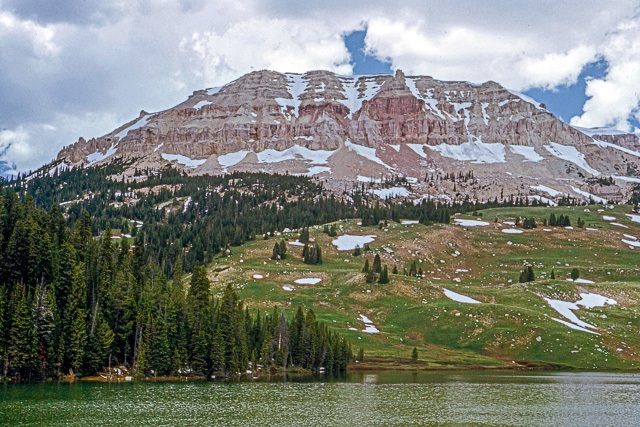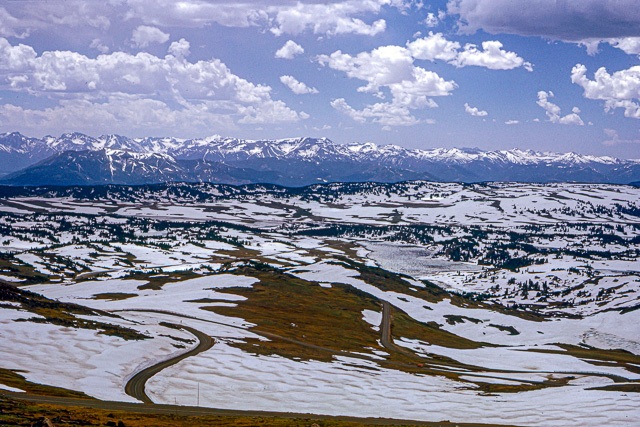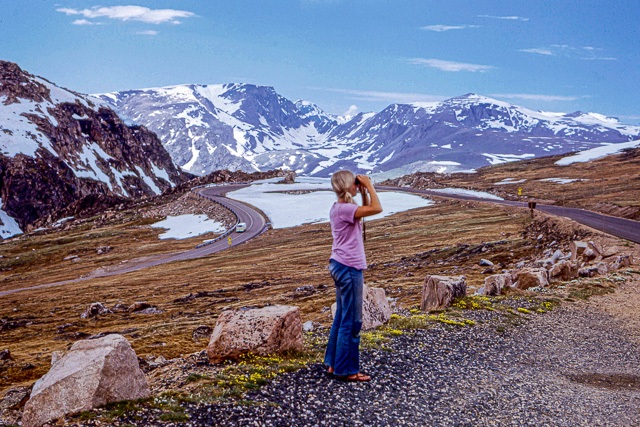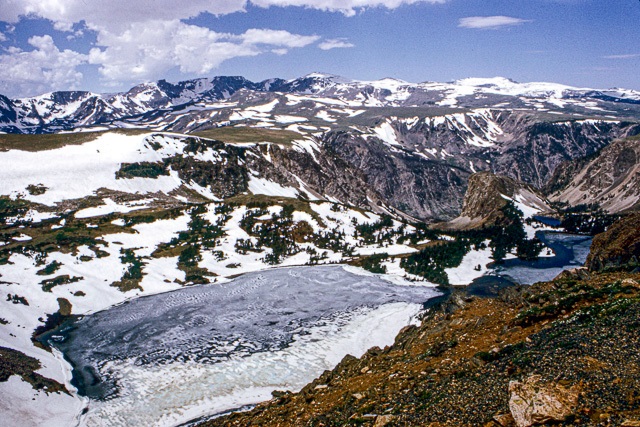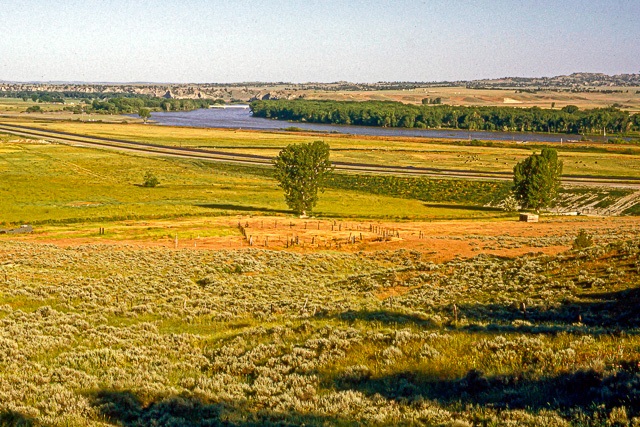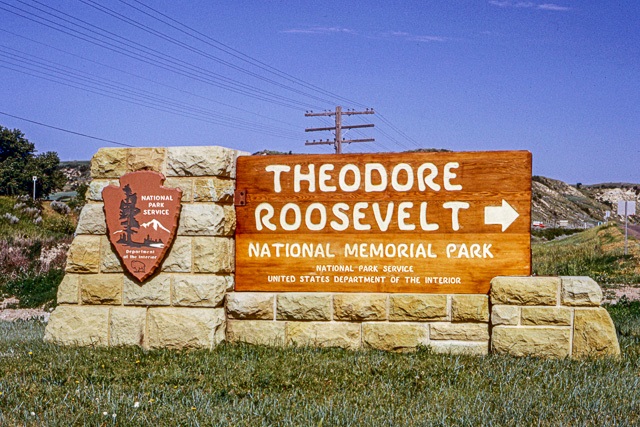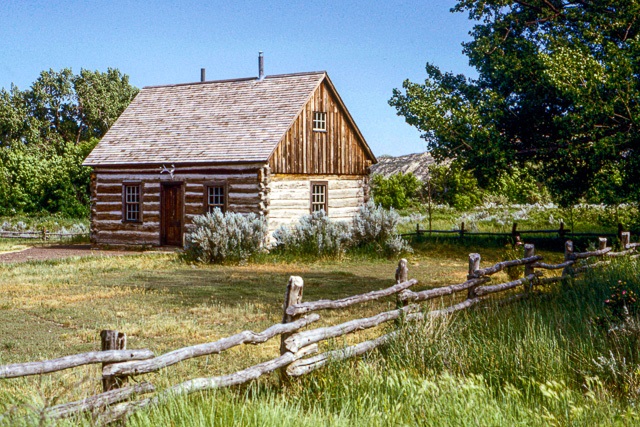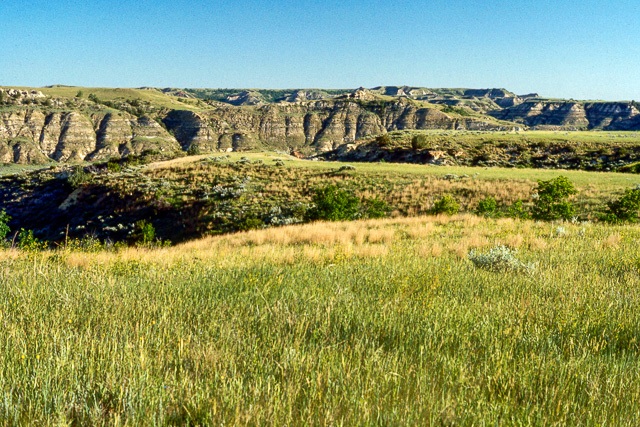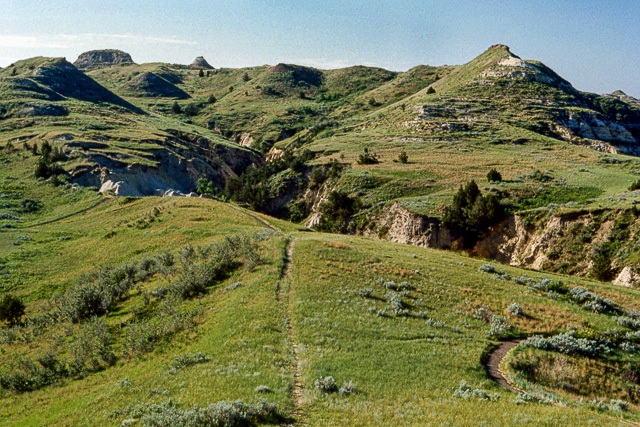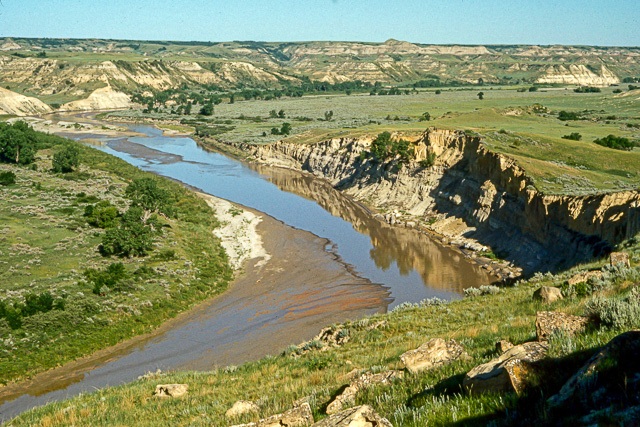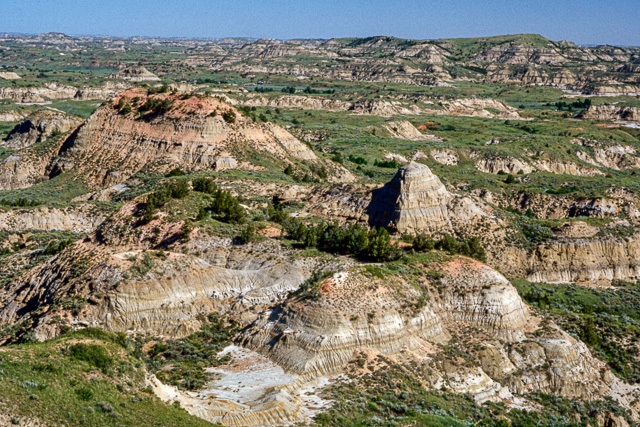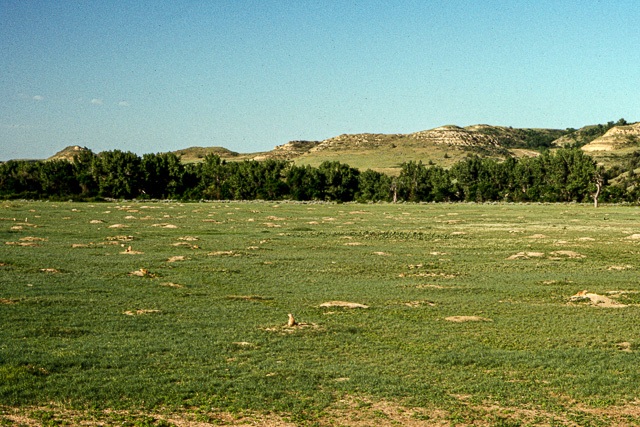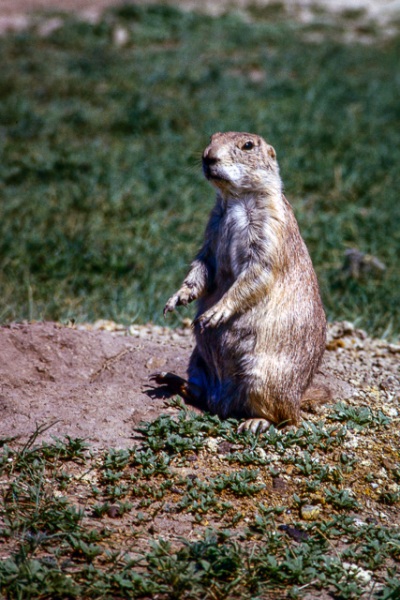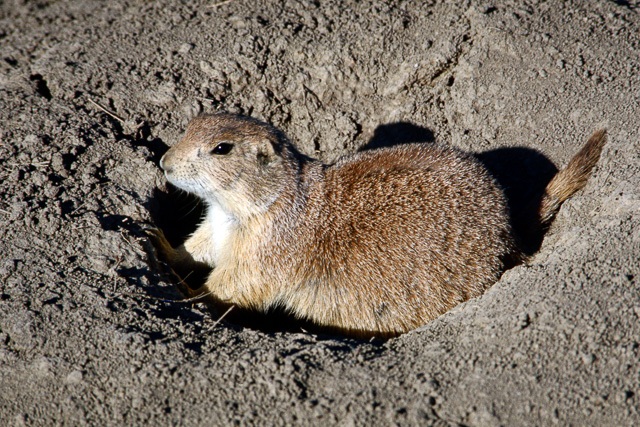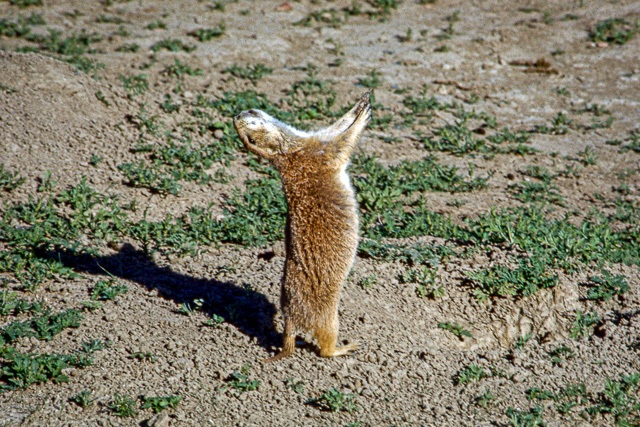The Trip – Part 21: Teddy Roosevelt Nat’l Memorial Park and Home
We left Yellowstone National Park through the Northeast entrance. This takes you on the Beartooth Highway, a section of US Highway 212 in Montana that runs along the Absaroka-Beartooth Wilderness Area. It has been described as having “the most daring landscapes.”
This is an absolutely amazing drive that twists and turns and gains about 5200 feet in elevation in the 12 miles from Cooke City to the Beartooth Pass. The pass sits at an elevation of 10,947 feet and, due to heavy snow, the highway is only open about half of the year.
There were plenty of snow-capped mountains and frozen lakes along the way so we stopped where we could at turnoffs along the narrow winding road. After the pass, the Beartooth Highway heads back down to Red Lodge, Montana, eventually leveling off and reaching the Yellowstone River. This stretch of the highway is much less exhilarating.
Coming out of the mountains we headed north to I-94 and started heading east again. Two-lane roads are usually much more interesting as well as photogenic, but when maximizing your distance:time ratio is the goal, the interstates are hard to beat.
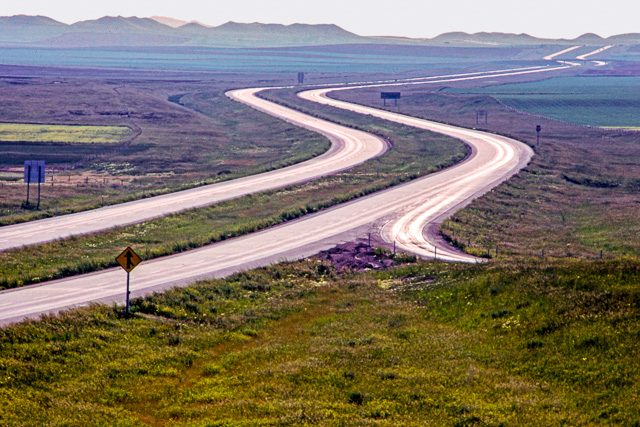
Crossing North Dakota, we decided to spend a couple days at Theodore Roosevelt National Park (called Theodore Roosevelt National Memorial Park in 1974). Teddy Roosevelt came out to the Dakota Territory in the 1880s to hunt bison. As President, he had an enormous impact on the conservation of public lands in America. I can’t summarize it any better than the National Park Service:
Conservation increasingly became one of Roosevelt’s main concerns. After becoming president in 1901, Roosevelt used his authority to protect wildlife and public lands by creating the United States Forest Service (USFS) and establishing 150 national forests, 51 federal bird reserves, 4 national game preserves, 5 national parks, and 18 national monuments by enabling the 1906 American Antiquities Act. During his presidency, Theodore Roosevelt protected approximately 230 million acres of public land.
This region is sometimes known as the North Dakota badlands. Although it is quite different from the South Dakota badlands, it is indeed a very rugged landscape. The area was still quite green when we were there and the scenery was enhanced by the presence of the Little Missouri River. One of the historical sites in the park is the Maltese Cross Cabin, which was used by Theodore Roosevelt before he was President. It’s located at the visitor center of the park.
Although the landscape was interesting, I really enjoyed seeing the prairie dog towns. Those furry creatures are much cuter than their rodent relatives. They’re fun to watch as they scoot in an out of their burrows and “bark” out what I took to be warnings. They are apparently quite social animals and keep watch for each other to defend against predators. One of the ones that I saw seemed to be doing a strange exercise. Maybe yoga is popular with them.
There weren’t many flowers in the park. Maybe it’s too dry there in the summer. However, there was one that really stood out. We were told it was a Sego Lily, “a bulbous perennial which is endemic to the Western United States.” It also happens to be the state flower of Utah.
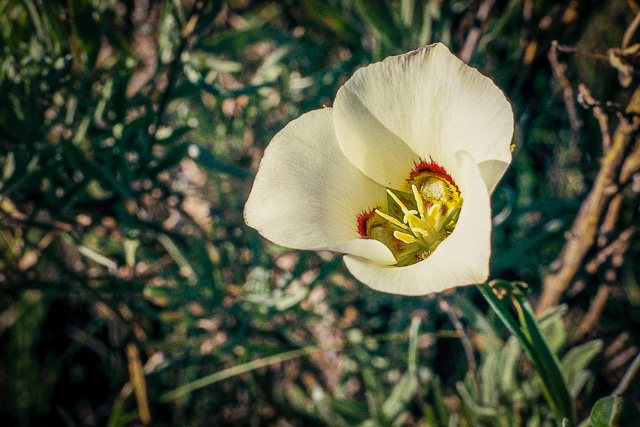
When we left Theodore Roosevelt National Park, we thought we might be able to drive all the way home. However, that was much too long of a drive. So, we made on final overnight stop in Mill Bluff State Park, Wisconsin.
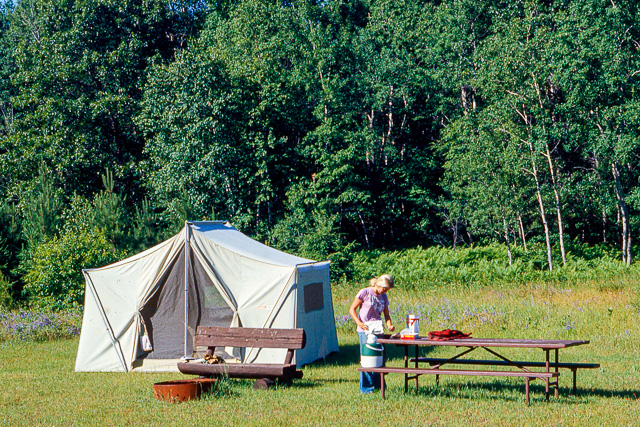
Since we let the lease to our apartment in Madison run out, we planned to stay with family in Racine for a short while before returning to Madison to look for a new place to live.
< The Trip – Part 20 :: The End
